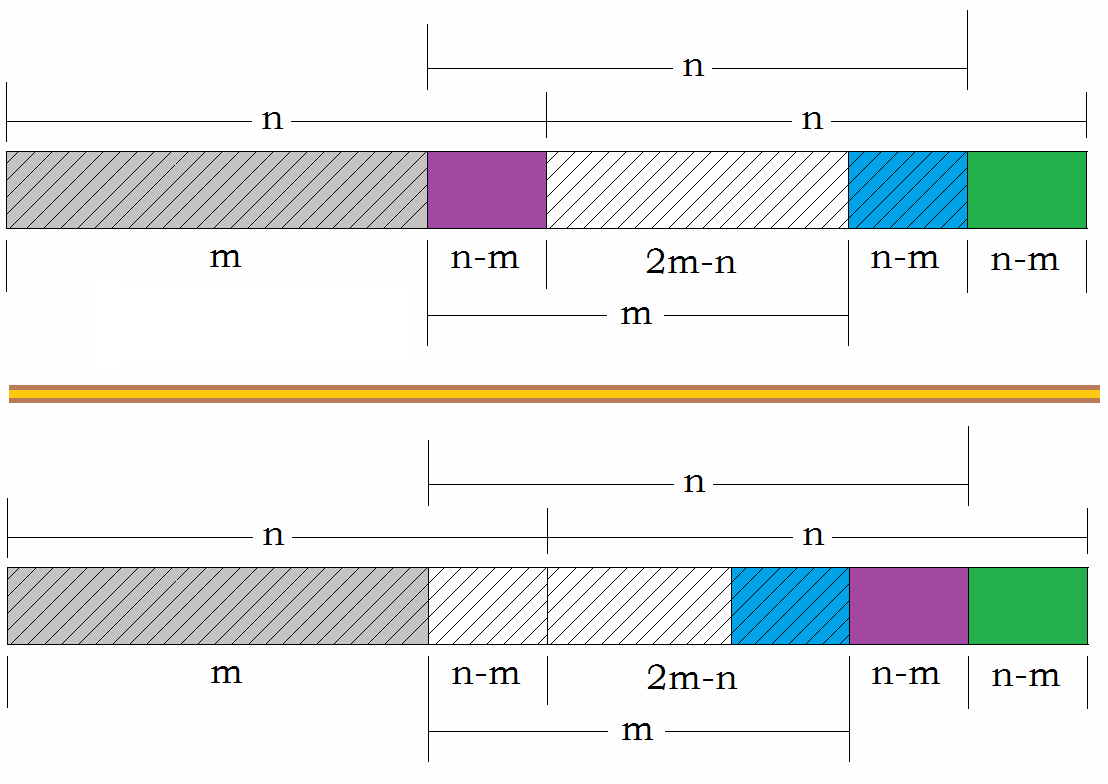算法
Master 定理
\(O\):表示上界(tightness unknown),即小于等于
\(\Theta\):该时间复杂度既是上界也是下界(tight),即等于的意思
\(\Omega\):表示下界(tightness unknown),即大于等于的意思
递推公式的复杂度计算,n 是问题规模,b 是递归子问题的数量,n/c 为每个子问题的规模(假设每个子问题的规模基本一样),f(n) 为递归以外进行的计算工作。
\(T(n)=b*T(\frac{n}{c})+f(n)\)
如果对任意正数 \(\epsilon \(,\)E = lg(b) / lg(c) = lg_c{b}\)
- \(f(n) = O(n^{(E−\epsilon)}),则T(n) = \Theta(n^E)\);
- \(f(n)= \Theta(n^E),则T(n)=Θ(f(n)log(n))\);
- \(f(n)=Ω(n^{(E−ϵ)}), 且对某个δ≥ϵ有f(n)=Ο(n^{(E+δ))},则T(n)=Θ(f(n))\);
示例:
- 二叉树遍历:\(T(n)=2*T(\frac{n}{2}) + \Omega(1)=\Theta(n)\)
- 归并排序:\(T(n)=2T(\frac{n}{2}) + \Omega(n)=\Theta(nlog n)\)
递归转循环
代码实现见 Java数据结构与算法的递归部分。
递归转循环的通用方法:通过手动模拟栈帧的执行。
// 树的后序遍历:递归版
public static <E> void postOrderRecursive(BinaryTreeNode<E> root, List<E> store) {
if (root == null) {
return;
}
if (root.getLeft() != null) postOrderRecursive(root.getLeft(), store);
if (root.getRight() != null) postOrderRecursive(root.getRight(), store);
store.add(root.getVal());
}
// 树的后序遍历:非递归版
public static <E> void postOrder(BinaryTreeNode<E> root, List<E> store) {
if (root == null) {
return;
}
Deque<Frame<E>> stack = new LinkedList<>();
stack.add(new Frame<>(root, store));
while (!stack.isEmpty()) {
Frame<E> current = stack.getLast();
switch (current.pc) {
case 0:
if (current.node == null) stack.removeLast();
break;
case 1:
if (current.node.getLeft() != null) stack.add(new Frame<>(current.node.getLeft(), store));
break;
case 2:
if (current.node.getRight() != null) stack.add(new Frame<>(current.node.getRight(), store));
break;
case 3:
store.add(current.node.getVal());
break;
case 4:
stack.removeLast();
break;
}
current.pc += 1;
}
}
// 栈帧保存的内容
private static class Frame<E> {
int pc;
BinaryTreeNode<E> node;
List<E> store;
public Frame(BinaryTreeNode<E> node, List<E> store) {
this.pc = 0;
this.node = node;
this.store = store;
}
}
极大极小算法
极小极大实际上使用了DFS来遍历当前局势以后所有可能的结果,通过『最大化』自己和『最小化』对手的方法获取下一步的动作。
- 需要一个局面评估器,评估当前步骤的得分,启发式算法;
- α-β剪枝也是类似的思想,只不过效率更高,因为它删减了一些不需要遍历的结点。
数学
四平方和三平方定理
洗牌算法(Fisher-Yates shuffle)
概率均等
选出第一张和任意一个1到n的牌换;选出第二张和任意2-n的牌换;依次直到n-1选出n-1到n的牌换;共n-1次交换;
// To shuffle an array a of n elements (indices 0..n-1):
for i from n−1 downto 1 do
j ← random integer such that 0 ≤ j ≤ i
exchange a[j] and a[i]
// To shuffle an array a of n elements (indices 0..n-1):
for i from 0 to n−2 do
j ← random integer such that i ≤ j ≤ n-1
exchange a[i] and a[j]
完美洗牌算法
参考文献:A Simple In-Place Algorithm for In-Shuffle
有个长度为2n的数组{a1,a2,a3,…,an,b1,b2,b3,…,bn},希望排序后{b1, a1, b2, a2,…., bn, an},时间复杂度O(n),空间复杂度O(1)的解法。
以 n = 4 为例,看到下标的变化:原下标 i => 新下标 ( 2 * i ) % ( 2 * n + 1)
| 序号 | 1 | 2 | 3 | 4 | 5 | 6 | 7 | 8 |
|---|---|---|---|---|---|---|---|---|
| 原数组 | a1 | a2 | a3 | a4 | b1 | b2 | b3 | b4 |
| 排序后数组 | b1 | a1 | b2 | a2 | b3 | a3 | b4 | a4 |
可以看出两个循环,每个循环可以O(1)时间替换;
- 1 -> 2 -> 4 -> 8 -> 7 -> 5 -> 1
- 3 -> 6 -> 3
如何寻找每个循环的开始:
-
对于 2 * n =(3^k-1)这种长度的数组,恰好只有k个环,且每个环的起始位置分别是 1, 3, 9,…3^(k-1) 。
-
如果 2 * n 不是 3^k-1 的倍数,总可以找到最大的整数m,使得m< n,并且2 * m=(3^k-1);
-
前2m个元素:将m 到m+n的数组循环左移n-m次(通过三次数组反转实现);
- 前2m个元素需要分别为
a1,a2...am,b1,b2...bm
- 前2m个元素需要分别为

- 2 * (n-m) 的规模可以通过循环替代得到,n = n - m, 继续处理,至 n <1